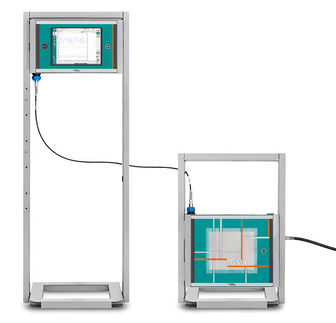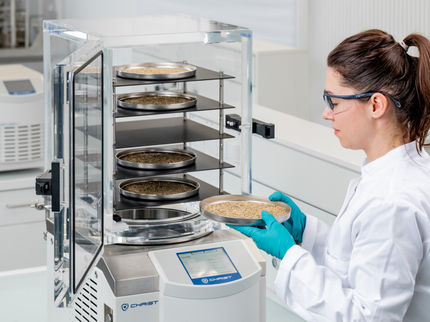Phenological growth stages and BBCH-identification keys of rice
|
| Code
| Description
|
| Principal growth stage 0: Germination
|
| 00 | Dry seed (caryopsis)
|
| 01 | Beginning of seed imbibition
|
| 03 | Seed imbibition complete (pigeon breast)
|
| 05 | Radicle emerged from caryopsis
|
| 06 | Radicle elongated, root hairs and/or side roots visible
|
| 07 | Coleoptile emerged from caryopsis (in water-rice this stage occurs before stage 05)
|
| 09 | Imperfect leaf emerges (still rolled) at the tip of the coleoptile
|
| Principal growth stage 1: Leaf development1, 2
|
| 10 | Imperfect leaf unrolled, tip of first true leaf visible
|
| 11 | First leaf unfolded
|
| 12 | 2 leaves unfolded
|
| 13 | 3 leaves unfolded
|
| 1 . | Stages continuous till . . .
|
| 19 | 9 or more leaves unfolded
|
| Principal growth stage 2: Tillering3
|
| 21 | Beginning of tillering: first tiller detectable
|
| 22 | 2 tillers detectable
|
| 23 | 3 tillers detectable
|
| 2 . | Stages continuous till ...
|
| 29 | Maximum number of tillers detectable
|
| Principal growth stage 3: Stem elongation3
|
| 30 | Panicle initiation or green ring stage: chlorophyll accumulates in the stem tissue, forming a green ring
|
| 32 | Panicle formation: panicle 1–2 mm in length
|
| 34 | Internode elongation or jointing stage: internodes begin to elongate, panicle more than 2 mm long (variety-dependent)
|
| 37 | Flag leaf just visible, still rolled, panicle moving upwards
|
| 39 | Flag leaf stage: flag leaf unfolded, collar regions (auricle and ligule) of flag leaf and penultimate leaf aligned (pre-boot stage)
|
| Principal growth stage 4: Booting
|
| 41 | Early boot stage: upper part of stem slightly thickened, sheath of flag leaf about 5 cm out of penultimate leaf sheath
|
| 43 | Mid boot stage: sheath of flag leaf 5–10 cm out of the penultimate leaf sheath
|
| 45 | Late boot stage: flag leaf sheath swollen, sheath of flag leaf more than 10 cm out of penultimate leaf sheath
|
| 47 | Flag leaf sheath opening
|
| 49 | Flag leaf sheath open
|
| Principal growth stage 5: Inflorescence emergence, heading4
|
| 51 | Beginning of panicle emergence: tip of inflorescence emerged from sheath
|
| 52 | 20% of panicle emerged
|
| 53 | 30% of panicle emerged
|
| 54 | 40% of panicle emerged
|
| 55 | Middle of panicle emergence: neck node still in sheath
|
| 56 | 60% of panicle emerged
|
| 57 | 70% of panicle emerged
|
| 58 | 80% of panicle emerged
|
| 59 | End of panicle emergence: neck node level with the flag leaf auricle, anthers not yet visible
|
| Principal growth stage 6: Flowering, anthesis
|
| 61 | Beginning of flowering: anthers visible at top of panicle
|
| 65 | Full flowering: anthers visible on most spikelets
|
| 69 | End of flowering: all spikelets have completed flowering but some dehydrated anthers may remain
|
| Principal growth stage 7: Development of fruit
|
| 71 | Watery ripe: first grains have reached half their final size
|
| 73 | Early milk
|
| 75 | Medium milk: grain content milky
|
| 77 | Late milk
|
| Principal growth stage 8: Ripening
|
| 83 | Early dough
|
| 85 | Soft dough: grain content soft but dry, fingernail impression not held, grains and glumes still green
|
| 87 | Hard dough: grain content solid, fingernail impression held
|
| 89 | Fully ripe: grain hard, difficult to divide with thumbnail
|
| Principal growth stage 9: Senescence
|
| 92 | Over-ripe: grain very hard, cannot be dented by thumbnail
|
| 97 | Plant dead and collapsing
|
| 99 | Harvested product
|
1 A leaf is unfolded when its ligule is visible or the tip of the next leaf is visible
2 Tillering or stem elongation may occur earlier than stage 13; in this case continue with stages 21 or 30
3 If stem elongation begins before the end of tillering continue with stage 30
4 Flowering usually starts before stage 55; continue with principal stage 6







